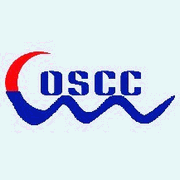HANJIN Shipping has taken delivery of the 13,100-TEU Hanjin Sooho, which is the first in a series of eight same-sized vessels built by Hyundai Heavy Industries.
A report by Alphaliner said the containerships were originally contracted by Muenchmeyer Petersen & Co (MPC) in February 2008, with the backing of the shipping line as a long-term charterer.
But MPC dropped out because it was unable to arrange the necessary financing in the wake of the Lehmann Bros collapse in September 2008.
As a result, Hanjin Shipping took over five of the contracts and four other vessels of this size were transferred to third-party investors through Gansey Bay Ltd, an Isle of Man-registered company. The deliveries of the nine ships were also postponed by up to one year, the report said.
The Hanjin Sooho is to be deployed in the CKYH 'NE 6' service, which is currently being upgraded from 10 vessels ranging in size from 8,200 to 9,950 TEU to 11 ships of 10,000 to 13,100 TEU.
The delivery of the Hanjin Sooho brings to 11 the number of containerships ranging in size from 13,000 to 14,000 TEU that were delivered in March, said Alphaliner.
"This sets a new record for the highest number of deliveries of containerships of above 10,000 TEU in a single month," it added.
Source Shipping Gazette - Daily Shipping News
CHINA's National Bureau of Statistics has reported that profits from Chinese industrial companies plummeted to the lowest level in January and February since 2009, this was because of slowing exports and government restrictions on property, reports Bloomberg.
Net income for Chinese chemical producers, automakers and other major industrial companies fell 5.2 per cent to US$96 billion from the year earlier, in sharp contrast to its 34.3 per cent year-on-year increase for the same two-month period in 2011.
Companies in the category of oil refining, coking and nuclear fuel processing switched from profits to losses, while two other industries saw losses widen, the bureau said.
Chang Jian, an economist at Barclays Capital said the decline is "alarming" and predicted that "more policy easing should be on the way, though at a measured pace." But she noted the government is unlikely to loosen property curbs. Dariusz Kowalczyk, a strategist from Credit Agricole CIB, estimated the report may also lead to cutting interest rates and required reserves.
Source Shipping Gazette - Daily Shipping News
A HAIPHONG court has jailed the former chairman of the state-owned Vietnam Shipbuilding Industry Group (Vinashin) for 20 years over a scandal which shook investor confidence in the nation, reports Singapore's AsiaOne News.
State-owned groups, many badly managed, control two-thirds of the nation's capital. Before its near-failure, Vinashin was seen as a model of state-owned enterprise that would lead Vietnamese efforts to compete on the global stage.
In 2008, the company had US$6 billion of orders on its books, 60,000 employees, 28 shipyards and projected growth of 35 per cent a year, according to a briefing note by consulting firm Oxford Analytica.
Pham Thanh Binh, 58, was convicted of violating state regulations while heading Vinashin, which almost collapsed with billions of dollars of debt. He received the maximum punishment.
Eight other former executives at the company were sentenced between three and 19 years. "This case caused serious economic consequences," court president Tran Van Nghiem said in the ruling in the northern city of Haiphong.
"The behaviour of Binh and the other defendants was very dangerous, damaging public opinion, reducing public trust and the prestige of the country in the eyes of foreign investors and resulting in stagnant business and production that forced the government to appoint a new management," he said. "Therefore, the defendants should be seriously punished."
The former Vinashin executives were accused of losing more than US$43 million mostly from the procurement of an Italian-made high-speed passenger boat as well as two electricity plants.
In December 2010, the company defaulted on the first US$60 million installment of a US$600 million loan arranged by Credit Suisse in 2007, but no further information on the loan settlement since then is available.
Binh admitted during his four-day trial that he had made mistakes but insisted that he had not acted for his own personal gain. "With my devotion for the shipbuilding industry, sometimes I made mistakes that were against regulations and the government's guidance," he told the court.
Source Shipping Gazette - Daily Shipping News
TURKISH petrochemical complex Petkim and APM Terminals have signed an agreement to build a 1.5 million TEU annual capacity container terminal in the Aliaga industrial complex, 300 kilometres south west of Istanbul on the Aegean Sea.
Petkim Petrokimya Holding manufactures plastic packaging, fabric, PVC and detergents, and exports a quarter of its production, reports Azerbaijan's Trend.az.
This comes as investments in the development of oil refining, petrochemistry, energy and logistics in the Aliaga industrial centre reached US$6 billion, according to Petkim board chairman Vagif Aliyev.
The State Oil Company of Azerbaijan (SOCAR) is a co-owner of the Turkish petrochemical complex Petkim in Aliaga. Work has commenced to construct a new oil refinery Star with capacity of 10 million tons to provide Petkim with raw materials.
Source Shipping Gazette - Daily Shipping News
THE US Supreme Court is seeking a plea from the Office of the US Solicitor General in the legal challenge against the Port of Los Angeles' requirements of its clean truck programme.
US Solicitor General Donald Verrilli, recently mauled defending the Obamacare bill before the Supreme Court, is changed with representing the federal government.
Last year the US Court of Appeals for the 9th Circuit ruled a number of requirements in the port's clean-trucks programme were legal, but rejected its ban independent truckers to favour of an employee-drivers only.
Port authorities were trying to introduce a rule that drivers had to be direct employees of trucking companies. Seventy per cent of truckers serving the port are non-unionised independents, often owner operators. The Teamsters union and environmentalists favour the ban.
Despite the American Trucking Associations winning on the independent driver point, it again appealed the 9th Circuit's decision to the Supreme Court expressing concern about a dangerous precedent being set if ports were permitted to establish requirements affecting truck rates, routes and services.
Requirements the 9th Circuit accepted included limits on off-street parking, maintenance and repair requirements, and proof of financial responsibility for motor carriers.
Source Shipping Gazette - Daily Shipping News
THE National Shippers Strategic Transportation Council (NASSTRAC) has lined up with American Trucking Associations (ATA) in fighting against the court appeal brought by consumer lobby Public Citizen, which wants the daily driving limit reduced to 10 hours.
Public Citizen is challenging the Federal Motor Carrier Safety Administration because the agency did not cut driving time in its new rules, which comes into effect in July 2013.
Founded by Ralph Nader, Public Citizen is an anti-corporate lobby based in Washington, says Wikipedia, which adds that its Public Citizen Litigation Group is a law firm that presses for strong government regulation to curb corporate power.
NASSTRAC says the reduction in working hours wouldn't reduce driver fatigue and that truck accident fatalities have declined since the current 11-hour limit was introduced in 2004.
"In its court appeal, Public Citizen is certain to repeat past arguments that driving time for truck drivers should be reduced by at least one hour per day," NASSTRAC states in a release. "For a decade, NASSTRAC has defended hours of service rules that improve highway safety while recognising the need of motor carriers and their customers for reliability, efficient use of capacity, and productivity, and year after year under the old hours of service rules, crash and fatality rates went down."
NASSTRAC supports ATA's challenge to revisions to the 34-hour restart provision that would keep some drivers off-duty longer between work weeks. Public Citizen wants the court to kill, not revise, the restart provision, said the report.
Source Shipping Gazette - Daily Shipping News
NEW ZEALAND's Steelbro has produced its latest sidelifter of the SB450 with a 45-tonne load capacity, which allows it to safely move very heavy containers.
Along with improved components, the safety factors are enhanced by the new SB450's reach of 3.9 metres measured from the centre of the trailer to the centre of the lifted container.
Although the reach is more than most people will need in daily operations, it means that drivers aren't operating their sidelifter at maximum reach, or limited in how they handle a container and risk pushing the sidelifter too hard, said a company statement.
The SB450 sidelifter can lift to its full hydraulic capacity, ie lift to its maximum weight at a further distance than previous models and its stability is useful when transferring containers from sidelifter to trailer and from sidelifter to railcar. The ability to load and unload containers on the ground also increases efficiency and safety for operators.
The Malaysian market is a significant market for Steelbro benefiting from a country which requires the use of containerised freight and can see the efficiency of the sidelifter, said Steelbro South East Asia development manager Chew Len Chet.
Source Shipping Gazette - Daily Shipping News
THE Association of Asia Pacific Airlines (AAPA) has reported that international air cargo demand measured in freight tonne kilometres (FTK) grew 7.8 per cent in February among airlines based in the Asia Pacific region.
But this was attributed to the Chinese New Year holidays coming earlier in January this year, meaning that this February's figures were made in comparison "to the softer freight market last year when the Chinese New Year holidays fell in February" and factories closed in China.
Offered freight capacity increased by six per cent, with an average international cargo load factor of 66.1 per cent, according to an AAPA statement.
Said AAPA director general Andrew Herdman: "The region's carriers recorded a 4.3 per cent decline in international freight traffic for the first two months of the year, a reflection of continued weakness in air freight markets, where surplus capacity has also been putting downward pressure on shipping rates."
Mr Herdman said the outlook for the aviation remains challenging, with oil averaging US$118 per barrel so far this year, "which could act as a brake on prospects for the global economy, given the fragility of the recent recovery".
Source Shipping Gazette - Daily Shipping News
LEXINDO Cargo Services Sdn Bhd has been appointed by Lion Air as its cargo sales agent in Malaysia.
"We are here to fulfil the strong demand for the air freight services in delivering the goods from Malaysia to Indonesia," said Lexindo managing director Justin Tham.
Lion Air is described as being the largest private carrier in Indonesia. "With the vast experience in airline industry, plus the wide network, it gives Lexindo such a leading advantage in bringing the best delivery service from Malaysia to Indonesia," a statement from Lexindo said.
Said Mr Tham: "We have developed a product that is able to improve the efficiency of cargo on-time delivery to all over Indonesia. Our unique door-to-door delivery service is designed to provide the solution for those who are looking for more convenient yet efficient and faster delivery service to our neighbour country, Indonesia."
Source Shipping Gazette - Daily Shipping News
RUSSIA's AirBridgeCargo Airlines (ABC), part of the Volga-Dnepr Group, has taken delivery of its second 747-8 freighter from Boeing's Seattle plant.
The new aircraft will be used on ABC's existing route network linking Europe, Asia and the US with the airline's hub in Moscow. It took delivery of its first B747-8 in January 2012, which is part of its order for five of the new generation cargo aircraft. The airline also has options for five more, a group statement said.
"The introduction of another new freighter will benefit both our company and our customers, who will appreciate the additional features of the aircraft. We have been successfully operating our first B747-8F for three months and the deployment of the second plane will see the continued realisation of ABC's fleet modernisation and optimisation strategy," said AirBridgeCargo president Tatyana Arslanova.
"The optimisation of new aircraft in our fleet will have a direct impact on our commitment to further quality improvement," she said.
With the delivery of the new B747-8F, AirBridgeCargo Airlines' fleet will total 12 B747 freighters.
Source Shipping Gazette - Daily Shipping News
HISTORIC Shannon Airport, near Limerick in the west of Ireland, where the duty free shop and Irish Coffee were born when the first transatlantic commercial flights arrived gasping for fuel, now hopes to escape limbo as a specialist aviation centre, reports Dublin's Irish Times.
Irish Transport Minister Leo Varadkar said the proposal would seek to attract new industries "that don't exist in Europe, such as aircraft refitting and aircraft recycling".
Speaking at a Shannon Chamber of Commerce, Mr Varadkar said: "It is my intention to do something very exciting and very innovative for Shannon that will recapture that early spirit that was there with the pioneers of aviation in this region.
"The model we are most likely to propose for Shannon is the development of an international aviation-based services centre for the region based around Shannon airport and the lands around Shannon," he said.
Now independent from the Dublin Airport Authority, Mr Varadkar said he will propose to government that a tax-incentivised international financial services centre-type model for the aviation industry be established at Shannon.
"My personal preference for Shannon is to end the current half-way house that isn't working and give Shannon the tools it needs to turn the situation around to get passengers, employment and investment up," Mr Varadkar said.
On Shannon's estimated EUR100 million (US$1.33 million) debt, Mr Varadkar said: "It is obvious that if Shannon is to succeed it won't be able if it starts off with a debt of EUR100 million, and doesn't have working capital to invest and absorb losses in the initial years if there are losses."
Source Shipping Gazette - Daily Shipping News
According to the online data of the main operational department, in March, the staff of the Odessa port handled 2 million 651.4 thousand tons of cargoes, which is 435.3 thousand tons (19.6 percent) more in comparison with the same month of 2011. These results were achieved through a significant increase in processing of dry cargoes - 680 mln.tons (435.3 tons, nearly 40 percent.) relatively to 2011. For the first quarter 28 percent of dry cargoes are handled, more than in January-March last year. In March, therer was the growth in ferrous metals handling (44 per cent.), cereals (381 percent), containers (+471 TEU).
Source OCSP
Malaysia’s growth, stability and workforce cited as reasons for move
PHILADELPHIA, KUALA LUMPUR, April 3, 2012 – BDP International has opened another Global Services Center (GSC) in Petaling Jaya, Malaysia. The U.S.-based, global logistics and transportation services firm opened its first such center in Kuala Lumpur in March 2008.
“Its impressive economic growth and political stability made Malaysia an extremely attractive place to increase our investment in the region,” said Richard Strollo, managing director of BDP South Asia. “It has a substantial manufacturing base, is a major oil exporter and is situated on a key international trade route. What resonated most, however, was the extraordinary quality of the country’s workforce, both in terms of skill sets, motivation and productivity.”
The new center will offer the same services as the first center, including import/export container and shipment tracking, SAP data entry, shipment data entry and billing and documentation, as well as Import Security Filing for ex-USA shipments. It will use standard operating procedures developed in the first center in serving its predominantly U.S. and European clients. In addition it will work with clients to customize the processes they outsource to BDP.
The new center is now fully operational, bringing together total of 125 number of logistics professional staffing the company’s two service centers. Directing the activities of both is Paramalingam Mahalingam, general manager of BDP Global Services Centres, who reports directly to Strollo.
Source BDP International
DANISH shipping giant Maersk Line has announced it will impose general rate increases (GRIs) for Asia to US west and east coast-bound cargo from May 1.
For Asia-US west coast services, the rates will increase US$400 per TEU, $500 per FEU, $565 per 40-foot high cube and $630 per 45-foot high cube container, according to its company statement.
For Asia-US east coast loops, the GRI will be $560 per TEU, $700 per FEU, $790 per high cube and $885 per high cube box.
Source Shipping Gazette - Daily Shipping News
FITCH RATINGS, one of the top three rating agencies with Moody's and Standard & Poors, says banks have been pulling back from ship financing due to the downturn within the industry, worsened by increasing funding pressures in the banking sector.
Low charter rates, driven by an oversupply of ships, has caused a steep drop in the value of ship fleets, resulting in rising loan-to-value ratios, said the report.
Fitch said it expects industry overcapacity to continue until 2014, when increased scrapping rates, reduced ship order books and an improvement in global demand should bring the market closer to equilibrium.
Overcapacity is specific dry bulk, container and crude tanker sectors, for which the 2008 order book was exceptionally large. The oversupply of ships, coupled with lacklustre growth in world trade, has caused a significant drop in shipping charter rates, it said.
"Asian banks have increased their activity in ship financing in recent years but are mainly active in their home region, with a significant global expansion unlikely in the near term," said the report, while "euro-funded banks are finding US-dollar funding more costly and less accessible, making financing new business less attractive".
The difficulty in financing ships is worsened by the reduced availability of other lenders, which limits the scope for syndication and makes shipping loans more difficult to exit, it said.
"Significant new ship orders in 2008 mean that a large amount of new ships are expected to enter world fleets in 2012-2013. Combined with subdued growth in global demand, there is now significant overcapacity in the industry," the report said.
"Opportunities for banks remain, particularly in stronger-performing shipping segments such as liquefied natural gas (LNG) transportation and offshore," said the Fitch Ship Financing Report.
"Banks that can maintain market presence in the near term may also benefit from higher margins in the short-term and fewer competitors once the industry recovers," said the report.
Fitch said it expects impaired loans and impairment charges relating to ship finance to continue at heightened levels or increase somewhat in 2012 and 2013. However, bank ratings already factor in this risk, so any ratings impact is unlikely.
"Shipping is a highly cyclical industry meaning that credit ratings for shipping companies tend to be sub- or low-investment grade and so absorb higher amounts of risk-based capital. Further deterioration in the credit quality of shipping exposures would increase the risk weightings of ship finance in banks' balance sheets - and hence their capital charge," said the report.
Source Shipping Gazette - Daily Shipping News
The magazine SEA has been published since 1935
International business magazine JŪRA MOPE SEA has been published since 1999
The first magazine in Eurasia in the four languages: English, Chinese, Russian and Lithuanian
|
|




.jpg)






